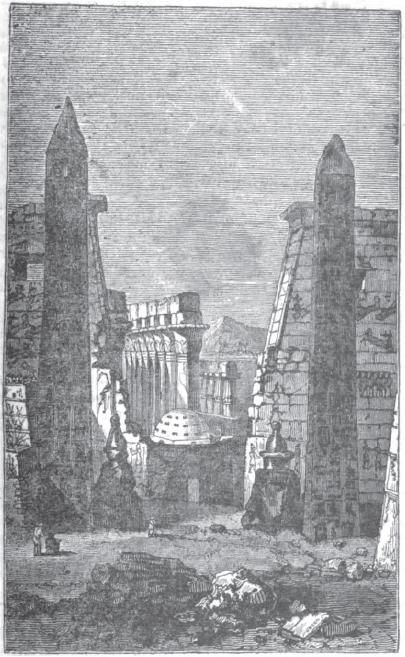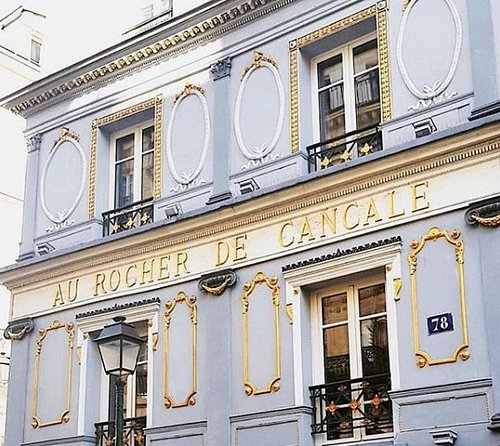The Luxor Obelisk in Paris ...
- Parisian Niche

- Oct 25, 2023
- 5 min read

You know P'Nicher, if you called someone old, they might shrivel in annoyance, but the Luxor Obelisk proudly boasts being the oldest monument in Paris. She even went so far as to top herself with a fresh coat of gold recently as an "in your face" gesture to show that, with age, comes deep beauty. Let's take a P'Niche peek to learn more about this monument that lies in the center of Paris' Historical Axis. Oh, and pack your goûter (snacks) - the P'Niche Time Travel Machine (patent still pending) is heading wayyyyyyyyyy back...

Picture it - we're at about the 13th century BC - 150 years before the reign of Ramesses II. While the Luxor Temple was erected before Ramesses II's reign, it was he who decided to add the two obelisks.
These (fraternal) twin sisters were each carved from a single piece of precious red granite.

"Wait", P'Niche hears you ask... "they are not identical in size - not identical twins?"
In fact, no...
The Western obelisk is actually shorter than her Eastern sister. The Western one (remaining still in the Luxor Temple) is taller, standing at 23 meters (that's 75 feet to you and me).
The more petite Eastern obelisk was actually mounted onto a tall pedestal (the high heels of the time) and placed further away from the pylon - creating an optical illusion of identical height and size of the pair.
If you look to this image, you can see the pedestal under the left obelisk. Both are covered with carved hieroglyphics, which, when translated by François Chabas, describes the life of Ramesses II. Because of course it does... Vendôme Column anyone? Napoléon?

Wait, how did Napoléon get involved? Well hang onto your Phrygian Cap as we blast forward to 1798 and Napoléon's campaigns in Egypt and Syria.
It seems our guy Nappy gave us not only the Napoléonic Bee but also some major military campaigns, wins, and ahem, some losses. More on him soon, so do subscribe to join us back here in the Parisian Niche...

Ok, back in Egypt, Napoléon was racking up some big military wins. With those came the note (by General Louis Charles Antoine Desaix) describing the grand obelisks to his commander, and the wonderful height they would bring to Paris if located there.
Further, Vivan Denon mentioned that bringing the obelisks to Paris would be an instant hit and grand recollection, a trophy of sorts, of the French conquests won.

Well, upon the military wins, the troops all left Egypt in quite the hurry, so plans of the transfer of the obelisks, and the obelisks themselves, were left abandoned.
Jumping ahead to the 1820s, under the reign of King Charles X, we have the opening of an Egyptian Museum. And what do we need/want for that collection? Right...
Perfect timing, as Monsieur Jean-François Champollion had just cracked the Rosetta Stone hieroglyphics code and implored the French government to acquire the obelisks - viewed as more important than other Egyptian obelisks, given their heavy hieroglyphical markings..

Finally, in 1830, the first governor of Egypt, Mehmet Ali Pasha, gifted the twin obelisks to France - originally meant to go to the British. Sorry UK - love ya guys!
As a gesture of friendship and reciprocity, France, in turn, granted the gift of a gorgeous clock.
This Cairo Citadel Clock still resides atop the Mosque of Muhammad Ali.
Oddly enough, the clock has not often functioned properly since it's installation, but in 2021, the Supreme Council of Antiquities decided to put forth research and plans to have the clock restored to a consistently working condition.

In 1831, the Western (smaller) obelisk was taken down and placed upon the "Luxor" ship to make the long journey to Paris.
Two years long...
And over $20 million dollars (in modern currency) to transport - the first of them.
Remember - Egypt offered France the pair of obelisks - twice the cost to move!

While the obelisk was on the move, King Louis-Philippe, ruler of the time, decided to place the monument in what we now call place de la Concorde. Pourquoi? Why?
The king wanted a visual representation of friendship and peace - a manifested symbol of the end of an incredibly volatile era, with hope for a better future - with a central location that all could see and access.

It should be noted that the original pedestal that was sent with the obelisk was considered to risqué for public viewing. It has baboons with clearly visible male genitalia, paws raised to adore the sun, as they guide it through its rise and set of the day. It's still on display at the Louvre-Lens museum in case you ever find yourself there for viewing.

The much more pedestrian pedestal, that France designed, illustrates the king's participation in bringing over the obelisk, as well as gold inlaid diagrams, displaying how the obelisk was dismantled in Egypt and resurrected in Paris - finally - on October 25, 1836.

Fun cocktail party note - the obelisk is also the world's largest sundial (keep in mind, most people of the time could not read or own personal timepieces).
Here, the time is indicated by the obelisk's shadow, with time noting lines and numbers marked with bronze colored roman numerals on the pedestrian areas. There are still a few visible markings if you look closely enough.

Moving quickly forward to 1981, we've arrived under the Presidency of François Mitterand, who officially "returned" the still waiting second obelisk to Egypt (to avoid the exorbitant time and costs of the movement of that second sister.)
The most diplomatic "thanks but no thanks" in modern day history!

Jumping ahead to 1998, the very generous fashion designer, Yves Saint Laurent, offered to cover the entire cost of adding a gold "pyramid cap" the obelisk, having learned that it was most likely originally covered in bronze, gold, or even an electrum cap, which is widely speculated to have been stolen around 500BC. This golden cap brings our obelisk to the towering height of 33.37 meters (that's 109 feet).

In 2021/2022, it was noted that the gold was looking a bit lackluster and a "facelift" was given to the golden top of the obelisk - just in time for the 2024 Olympic Games.
This new and newly installed obelisk tip is made from gold-plated steel. It was crafted and manufactured by a specialized metalworking company: the Ateliers d'art Saint-Jacques and the Fonderie de Coubertin - under the close supervision of the French Minister of Culture.

Having recently seen it - it's just spectacular and with the newly cleaned statues that surround the square, the overall look is simply magnificent!
Ready to go check it out? Great!
Place de la Concorde, 75001
Métro: Concorde (Lines 1, 8)
So what do you say, P'Nicher, are you ready to spend some time admiring the shining antiquity that is Paris' Luxor Obelisk? Let us know in the comments below et à bientôt!





Wow, last time I saw the obelisk, she was badly weatherworn. Merci to Yves Saint Laurent for spiffing her up! Merci Chrissy for the fun cocktail fact!